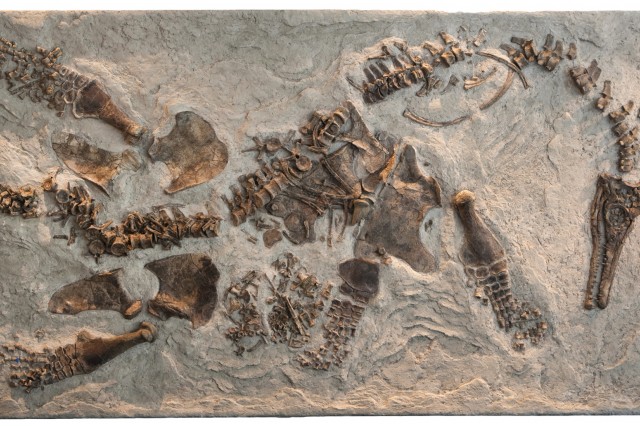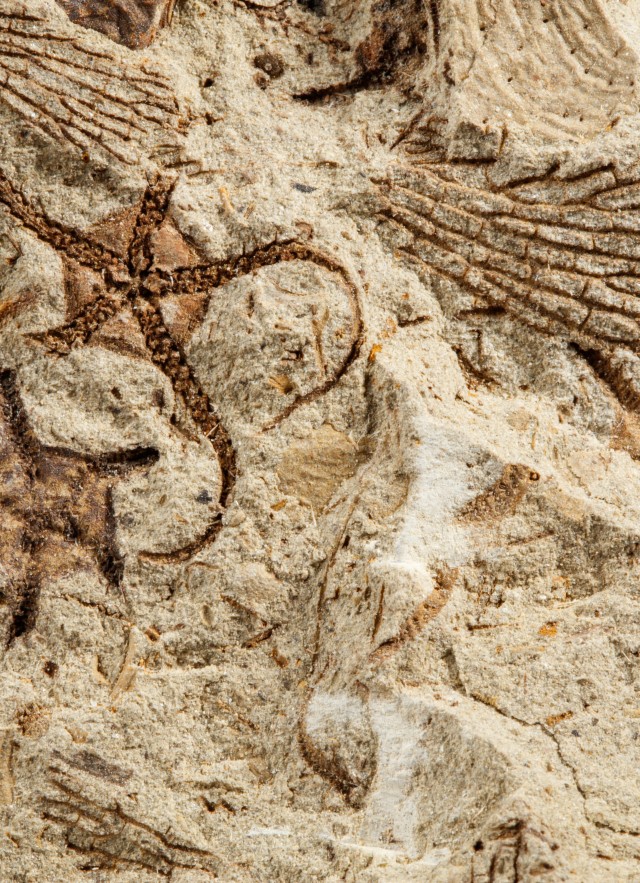
reading | gr 2-5

Fossils can form in many ways. A trace fossil is a type of fossil record that shows evidence of life, but isn’t the actual preserved remains of a plant or animal. On the other hand, body fossils, like what we see in the Dinosaur Hall at the Natural History Museum, are the fossilized remains of actual organisms, usually changed over time by mineralization.
Want to learn more about fossils? Check out stories about fossil discoveries at NHM!